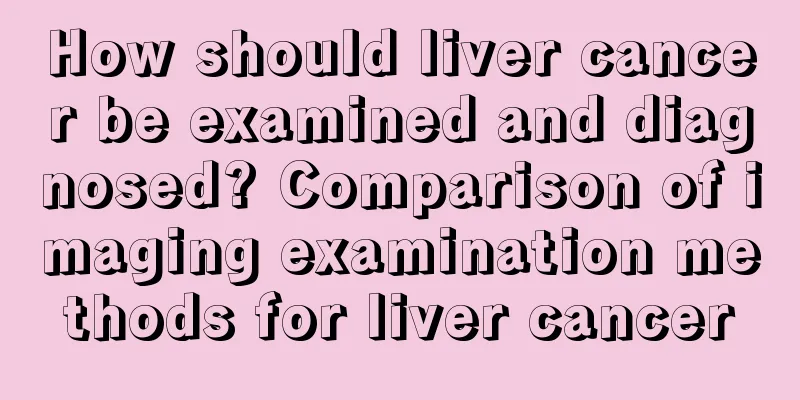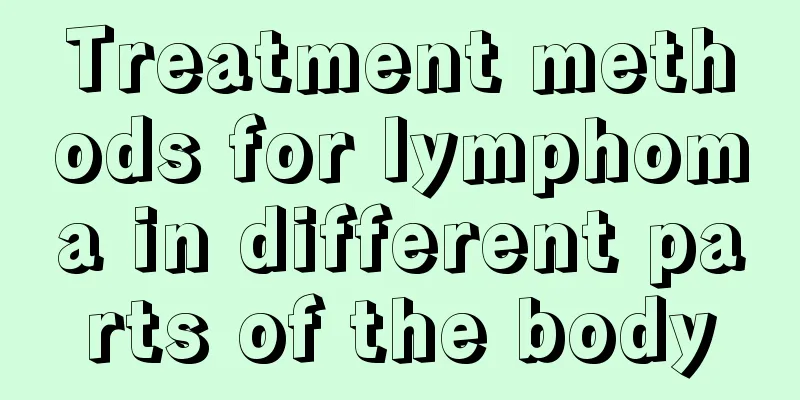How should liver cancer be examined and diagnosed? Comparison of imaging examination methods for liver cancer

|
CT and magnetic resonance imaging (MRI) are imaging examination methods commonly used in the diagnosis and treatment of liver cancer. What are the differences between these two examinations? How should patients choose? Let's compare the differences between CT examination and MRI examination of liver cancer. CT examination of liver cancer The emergence of CT has made a qualitative leap in the imaging diagnosis of liver cancer and promoted the progress of liver surgery. The resolution of CT is much higher than that of ultrasound, and the image is clearer and more stable, which can more comprehensively and objectively reflect the characteristics of liver cancer. CT examination can clearly show the size, number, shape, location, boundary, tumor blood supply, and relationship with intrahepatic ducts of liver cancer; it has important diagnostic value for whether there are cancer thrombi in the portal vein, hepatic vein and inferior vena cava, whether there is metastasis in the portal and abdominal lymph nodes, and whether liver cancer invades adjacent tissues and organs; CT can also judge the severity of liver cirrhosis by showing the shape of the liver, the size of the spleen, and the presence or absence of ascites. Fast spiral CT can scan the entire liver in one breath-hold (about 20 seconds), which can avoid missing tiny lesions due to up and down movement of the plane caused by respiratory movement, and can also overcome the problem of artifacts caused by respiratory movement. Spiral CT can perform thin-layer scanning with a minimum layer thickness of 1 mm, and the detection rate of small liver cancers of 1 to 3 cm can reach 90%, and high-quality three-dimensional image reconstruction can be performed within the length of the spiral scan. For liver cancer that is difficult to make a clear diagnosis with enhanced CT, angiographic CT can be further used. Contrast agent is injected into the hepatic artery through a percutaneous catheter, and CT is observed when the hepatic artery is developed, which is called CT angiography. MRI of liver cancer does not cause radioactive radiation and can be imaged from multiple directions. The new MRI has overcome the disadvantage of the early imaging speed being too slow. The field strength has been increased to 1.5-2.0T, making a variety of new imaging technologies such as gradient echo sequence and spectral analysis possible. In addition, the use of hepatocyte-specific contrast agents has greatly improved the detection rate of small liver cancers. The detection rate of lesions smaller than 1 cm is 55%, 1-2 cm is 70%, and 2-3 cm is 82%. MRI can clearly display the intrahepatic blood vessels and bile duct structure, which is very helpful in understanding the relationship between tumors and intrahepatic blood vessels and bile ducts. MRI can also better display the internal structure of the liver and liver cancer tissues, which is very helpful in evaluating the efficacy of various treatments. For example, after percutaneous intratumoral alcohol injection, radiofrequency ablation or microwave curing, tumor necrosis appears as a uniform low signal in the T2 stage. If the signal inside the tumor is uneven, it often indicates incomplete necrosis after treatment. MRI is easy to detect small liver cancers located on the surface of the liver that are difficult to detect with CT, and is also highly sensitive to small metastatic lesions in the liver. However, the edge of the left lobe of the liver is affected by the pulsation of the heart and aorta, and the detection rate of small liver cancer is not much different from that of CT. Other imaging methods for liver cancer ① Ultrasound examination can show the size, shape, location of the tumor and the presence of tumor thrombus in the hepatic vein or portal vein, with a diagnostic accuracy rate of up to 90%. ② Selective celiac artery or hepatic artery angiography can detect vascular-rich tumors with a resolution of about 1 cm. |
<<: Can advanced lung cancer be cured? What are the treatments for advanced lung cancer?
Recommend
Can sour things help sober you up
Because alcohol products contain a large amount o...
What are the Chinese medicines against pancreatic cancer
Traditional Chinese medicine also has relatively ...
Is Guilinggao the same as black jelly?
Guilinggao and black jelly are very similar. If y...
How to know if there is no recurrence after surgery for colorectal cancer
Any malignant tumor will recur again, and so does...
Postoperative shoulder and neck exercises help laryngeal cancer recovery
At present, medical technology has made laryngeal...
How to change uneven shoulders with one movement
Uneven shoulders are quite common in our daily li...
How much endometrium is normal after thawing and transplantation
Many women will no longer produce eggs when they ...
Symptoms of colon perforation
Colon perforation often occurs in many elderly pe...
Differentiation between pancreatic cancer and true pancreatic cyst
For patients, it is crucial to accurately disting...
Surgery is the first choice for treating malignant brain tumors
Malignant brain tumors, also known as brain cance...
Can colonoscopy remove polyps?
The human large intestine and small intestine are...
What are the side effects of intestinal hydrotherapy
Sometimes people have intestinal discomfort, and ...
How to treat pancreatic cancer
Pancreatic cancer is a common disease among women...
Treatment of suppuration caused by BCG vaccine
BCG vaccine is a vaccine that can prevent tubercu...
How long does it take for liver cancer to recur after ascites drainage
Patients with ascites can generally only receive ...









